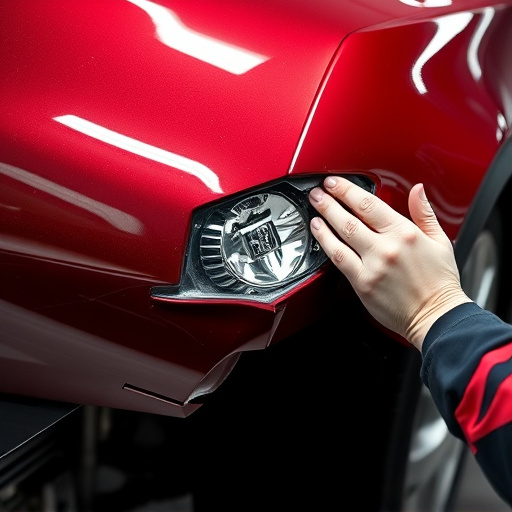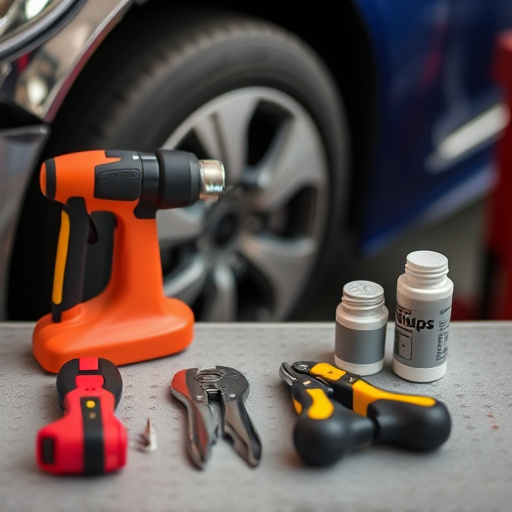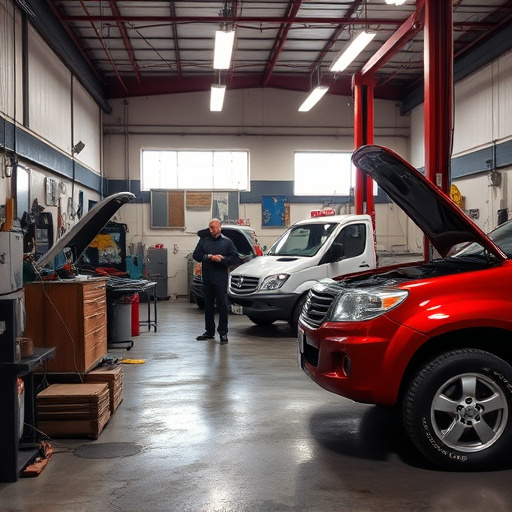Ice damage collision repair is crucial for vehicles in colder regions, addressing issues like dents, scratches, and structural deformities. For minor damage, dent removal or paintless dent repair is cost-effective; severe cases require specialized equipment and expert technicians. The process involves case assessment, disassembly, repair/replacement, paint matching, and final inspection. Understanding this process empowers car owners to efficiently navigate repairs, ensuring their vehicles return to pre-damage conditions through transparent estimates and meticulous detailing.
Ice damage can wreak havoc on vehicles, leaving drivers with costly repairs ahead. If you’re facing this challenge, understanding the collision repair process is crucial. This comprehensive guide delves into the intricacies of ice damage collision repair, addressing common questions and concerns. From understanding the initial assessment to the step-by-step restoration process, we provide a clear roadmap for your recovery journey. Learn what to expect at each stage and equip yourself with knowledge to navigate this challenging experience smoothly.
- Understanding Ice Damage: Common Questions and Concerns
- The Collision Repair Process: Step-by-Step Guide
- Frequently Asked Questions: What to Expect During Recovery
Understanding Ice Damage: Common Questions and Concerns

Ice damage can be a common concern for vehicle owners, especially in colder climates. When ice accumulates on a car’s surface, it can lead to various issues, including dents, scratches, and even structural deformities. Understanding how to handle and repair ice damage is crucial for maintaining your vehicle’s aesthetics and safety.
Many customers frequently ask about the process of ice damage collision repair. A reputable auto collision center will assess each case individually. For minor ice-related dents, they might employ techniques like dent removal or paintless dent repair, which can be a more efficient and cost-effective solution compared to traditional panel replacement. In severe cases, where ice has caused significant structural changes, specialized equipment and expert technicians are required for precise restoration, ensuring the vehicle returns to its pre-damage condition, whether it’s a Mercedes-Benz repair or any other make.
The Collision Repair Process: Step-by-Step Guide
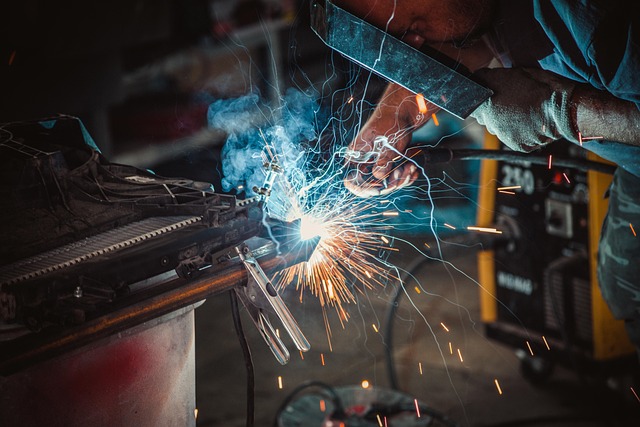
When your vehicle experiences ice damage, navigating the collision repair process can seem daunting. However, understanding each step ensures a smooth and efficient recovery for your car. Here’s a step-by-step guide to demystifying this process, specifically tailored to addressing ice damage:
1. Initial Assessment: Begin by thoroughly inspecting the damaged areas, focusing on key components like fenders, doors, and hood. Your repair shop will document the existing condition to help in the insurance claim process. This step involves identifying cracks, dents, and any other visible signs of damage caused by the ice.
2. Disassembly & Preparation: Once documented, the damaged panels—like fenders or doors—are carefully removed from your vehicle. This allows for a deeper inspection and facilitates the use of specialized tools to ensure precise repairs. After disassembly, the affected areas are cleaned and prepared, removing any debris or remnants that could impede the repair process.
3. Repair & Replacement: Depending on the extent of damage, the next step involves either repairing or replacing specific components. For minor dents and dings, a process called ‘pinning’ might be used to straighten the metal without extensive welding. In more severe cases where panels are bent or cracked, replacement parts (often from original equipment manufacturers) are installed through precise cutting, fitting, and welding techniques.
4. Paint Matching & Application: After all repairs are complete, the affected areas need to blend seamlessly with the rest of your vehicle’s body. This involves meticulous paint matching to ensure color accuracy. Once matched, a skilled painter applies a coat or two of high-quality paint, allowing it to cure properly before final inspection.
5. Final Inspection & Detailing: The finished repairs are inspected against the initial assessment to ensure all damage has been addressed satisfactorily. This step includes checking for alignment, paint quality, and overall aesthetic appeal. Finally, a detailed cleaning restores your vehicle’s exterior to its pre-ice damage condition, leaving it looking as good as new.
Frequently Asked Questions: What to Expect During Recovery
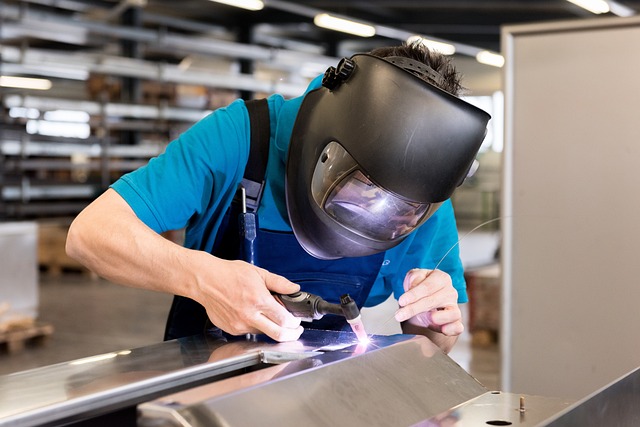
When your vehicle experiences ice damage due to collision, understanding the recovery process is essential for peace of mind. Many customers have concerns about what lies ahead during their car’s journey back to optimal condition. Here are some common questions and answers to help clarify expectations during the ice damage collision repair process.
After an initial assessment, the auto body shop will provide a detailed estimate outlining the required repairs. This step is crucial as it ensures transparency in costs and timelines. The recovery process involves several stages: dent removal or painting for exterior damage, replacement of any damaged parts, and meticulous detail work to restore your vehicle’s pre-accident condition. Throughout this period, regular communication from the auto body restoration team keeps you informed about progress, with updates on when your car will be ready for pickup. Collision repair services are designed to return your vehicle to its best state, ensuring safety and satisfaction upon completion.
Ice damage can significantly impact vehicles, but understanding the collision repair process empowers car owners. By familiarizing themselves with the steps involved and frequently asked questions, drivers can navigate the recovery journey with confidence. The article has provided valuable insights into how professionals handle ice damage collision repair, ensuring vehicles are restored to their pre-incident condition. For those seeking guidance, this knowledge base serves as a comprehensive resource for what to expect during the repair process, fostering peace of mind in challenging times.
